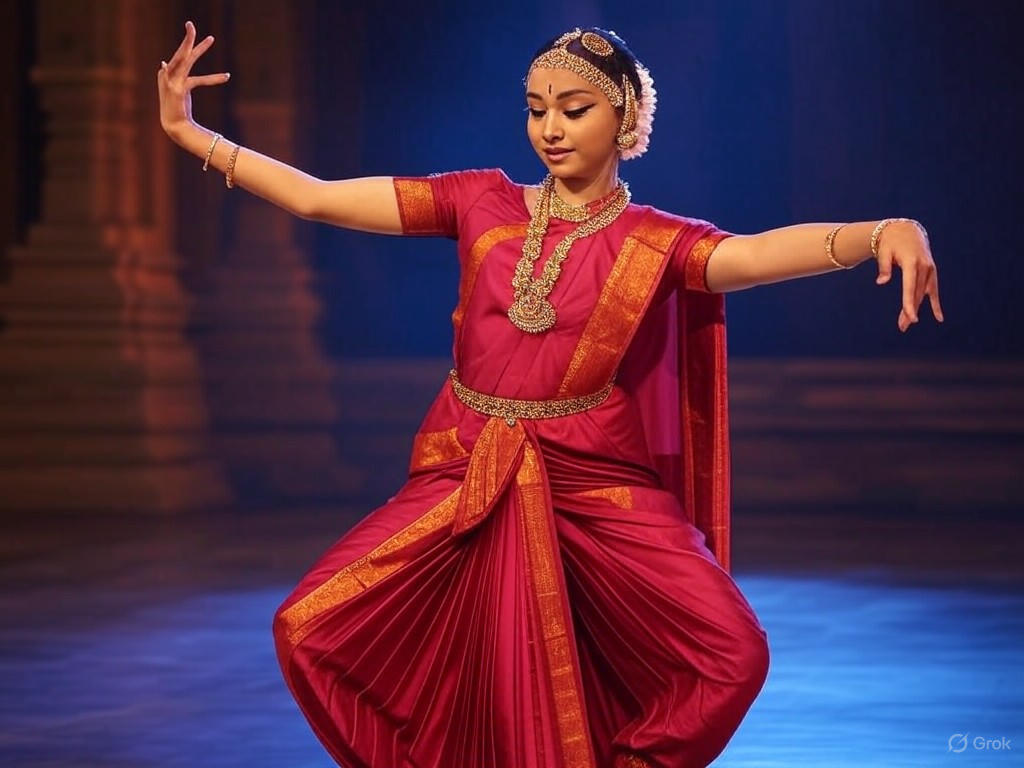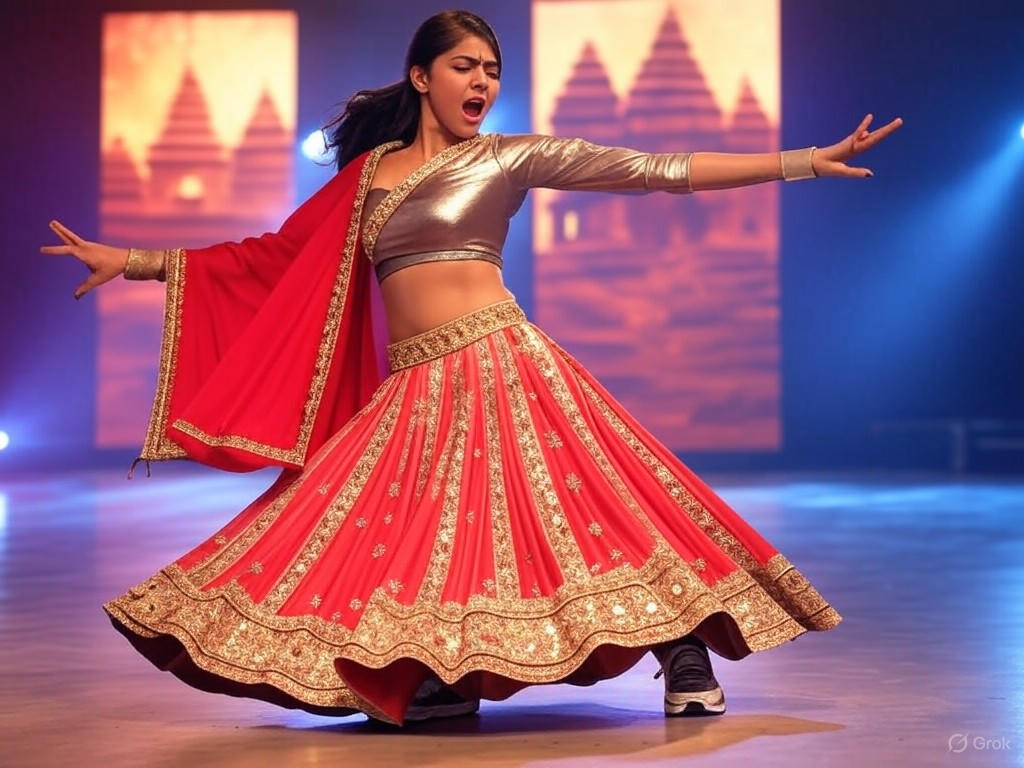Indian Classical Dance: Tradition Meets Innovation
In an age where the world spins ever faster on the axis of globalization, one might be forgiven for assuming that ancient arts would fade into obscurity, much like a forgotten melody in a bustling symphony. Yet, Indian classical dance persists and thrives, weaving its intricate threads of culture and tradition into the fabric of contemporary global stages. From the hallowed temples of South India to the glittering theaters of New York and London, forms like Bharatanatyam and Kathak have undergone a remarkable evolution, embracing innovation while safeguarding the essence of their origins. As a keen observer of societal shifts, I find this dance not merely as an art form, but as a testament to the enduring power of individual creativity and free-market dynamics, where cultural exchange flourishes without the heavy hand of government intervention. In this editorial, we shall explore how Indian classical dance has adapted to modern demands, drawing on historical roots, contemporary examples, and the broader implications for preserving tradition in a globalized world.
The Roots of Tradition: A Dance Born from History and Heritage
Indian classical dance has long been more than mere entertainment; it is a living archive of India's spiritual and social ethos. Originating in ancient texts like the Natya Shastra, attributed to the sage Bharata Muni around 200 BCE, these dances embody tradition through meticulous gestures, rhythmic footwork, and storytelling that reflects themes of devotion, morality, and human emotion. Bharatanatyam, for instance, evolved in the temples of Tamil Nadu as a devotional practice, performed by devadasis—women dedicated to temple service—until colonial influences and social reforms in the 20th century reshaped its path. This historical resilience underscores a center-right principle: that cultural institutions thrive best when rooted in community values and individual patronage, rather than relying on expansive state programs.
Yet, as the world modernized, so too did these dances. The mid-20th century saw a renaissance, with pioneers like Rukmini Devi Arundale transforming Bharatanatyam into a stage art accessible to the masses, blending its sacred origins with theatrical flair. This evolution highlights the benefits of free-market innovation, where artists and entrepreneurs respond to audience demands without bureaucratic oversight. As The Wall Street Journal notes in its analysis of cultural exports, such adaptations have turned traditional arts into viable economic assets, generating revenue through international tours and festivals. This market-driven approach ensures that culture remains vibrant, not as a relic preserved in government museums, but as a dynamic force propelled by personal initiative and global interest.

A dancer embodies the intricate mudras of Bharatanatyam, symbolizing the dance's deep-rooted connection to ancient Indian spirituality and its role in modern cultural preservation.
Innovation on the Global Stage: Blending Old and New
The true marvel of Indian classical dance lies in its ability to innovate while honoring tradition. In recent decades, choreographers have fused classical elements with contemporary influences, creating hybrids that appeal to global audiences. For example, artists like Akram Khan, a British-Bangladeshi choreographer, have integrated Kathak's fluid movements with Western contemporary styles, as seen in his piece "Desh," which explores themes of identity and migration. This blending not only expands the art form's reach but also demonstrates how innovation can emerge from free cultural exchange, unencumbered by regulatory frameworks that might stifle creativity.
Such developments are not without challenges. Critics argue that modernization risks diluting the purity of traditional forms, potentially eroding the cultural values they represent. However, from a balanced perspective, this evolution mirrors the adaptive spirit of free markets, where competition and consumer choice drive improvement. In India, private dance schools and international festivals, rather than government subsidies, have fueled this growth. As BBC Culture explores in its feature on global dance trends, the rise of online platforms and virtual performances during the COVID-19 pandemic accelerated this innovation, allowing dancers to reach new audiences worldwide. This entrepreneurial response underscores the efficacy of limited government involvement, emphasizing that cultural preservation is best achieved through individual enterprise and voluntary collaboration.
Evidence of this success abounds in the global performing arts scene. Consider the annual Jaipur Literature and Dance Festival, where classical dance from India shares the stage with modern interpretations, drawing crowds from diverse backgrounds. Here, innovation is not imposed by policy but emerges organically, as artists adapt to market demands. A study by the UNESCO-endorsed World Dance Alliance, as detailed in their report on intangible cultural heritage, reveals that Indian classical dance has seen a 40% increase in international performances over the past decade, largely driven by private funding and diaspora communities. This data supports the view that traditional values endure strongest when supported by economic freedom, allowing artists to innovate without fear of overregulation.

This image illustrates the innovative fusion of Kathak's traditional spins and storytelling with contemporary choreography, highlighting how Indian dance adapts to global influences while maintaining its cultural core.
The Broader Implications: Cultural Preservation in a Free-Market World
As we reflect on the evolution of Indian classical dance, it becomes clear that its success offers lessons for broader public issues. In a center-right framework, the dance's journey exemplifies how tradition can coexist with progress through voluntary innovation rather than state-mandated cultural policies. Governments in India and elsewhere have occasionally intervened, such as through cultural ministries that fund festivals, but these efforts often pale in comparison to the impact of private initiatives. For instance, the proliferation of dance academies in the United States, run by Indian expatriates, has created a thriving ecosystem of classes and performances, fostering cultural exchange without taxpayer burdens as analyzed by The Guardian's arts section.
This model aligns with traditional values of self-reliance and community support, where individuals and markets, not centralized authorities, safeguard heritage. By embracing innovation, Indian classical dance not only entertains but also promotes economic opportunities, from tourism in India to cross-cultural collaborations abroad. A 2023 report from the Economic Times, detailing the economic impact of cultural arts, estimates that the global dance sector contributes over $1 billion annually to India's economy, driven primarily by private enterprises. Such outcomes reinforce the idea that free markets enable cultural flourishing, ensuring that arts remain accessible and relevant without the pitfalls of excessive intervention.
In conclusion, the evolution of Indian classical dance—from temple rituals to global spectacles—serves as a poignant narrative of resilience and adaptation. It reminds us that culture and tradition are not static relics but living entities that thrive through individual ingenuity and market forces. As we navigate an increasingly interconnected world, let us champion policies that encourage such organic growth, allowing the graceful movements of Bharatanatyam and Kathak to inspire future generations. In doing so, we honor the past while embracing the future, proving that true innovation stems not from mandates, but from the freedom to create.
Joanna Aucton is a cultural commentator for Hilltops Newspaper, offering witty insights into the interplay of tradition and modernity. Her views do not necessarily reflect those of the publication.

